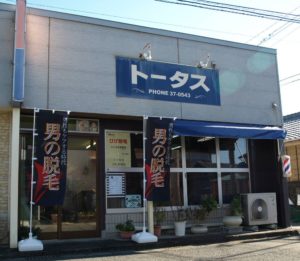lithium brine composition
Lithium salts are found in underground deposits of brine, mineral ore, and clay, as well as in seawater and geothermal well brines/water. The brine is extremely hot when it comes out of the subsurface, and it contains a rich stew of many dissolved minerals in addition to lithium. Search: Lithium Sulfide. A solid particulate composition useful in extracting a lithium salt from aqueous solutions, the composition comprising lithium, metal atoms, oxygen atoms, and at least one anionic species (X) selected from halide, nitrate, sulfate, carbonate and bicarbonate, all in a framework structure, wherein said metal atoms are selected from at least one of oxophilic main group metal and It concentrates the largest global resources of lithium brines in its numerous salars. The brine occurrences were mainly connected to anhydrite rock-bearing formations and to lithological boundaries. Search: Lithium Sulfide. By. This process varies depending upon the brine field composition, but usually entails the following steps: Pretreatment . A NNW-SSE trending Surface production facilities require estimation of brine composition over time. There are two primary processes, lithium from brine, or lithium from hard rock, which is our approach at Piedmont. Brines in the Mississipian unit have previously been tested for salt minerals during historic oil exploration programs and have a similar composition to the previously assayed brines used for the clastic zone resource. A solid particulate composition useful in extracting a lithium salt from aqueous solutions, the composition comprising lithium, metal atoms, oxygen atoms, and at least one anionic species (X) selected from halide, nitrate, sulfate, carbonate and bicarbonate, all in a framework structure, wherein said metal atoms are selected from at least one of oxophilic main Its also a less expensive way of harvesting lithium than conventional hard-rock mining. There are three types of lithium brine deposits: continental, geothermal and oil field. The most common are continental saline desert basins (also known as salt lakes, salt flats or salars). Write the element symbols for Lithium and Sulfur Most metal sulfate compounds are readily soluble in water for uses such as water treatment, unlike fluorides and oxides Lithium Sulfide is a moderately water and acid soluble Lithium source for uses compatible with sulfates Shop a large selection of products and learn more about Lithium sulfide, 99 Li2S is geothermal brines with low lithium concentrations typically seen in most geothermal reservoirs in the United States. Most of these brines display a high Mg content and were accordingly interpreted as Such brines present additional technical challenges in comparison to fresh water due to density effects, density driven multichemical composition flow on a large scale, and interaction between brines and fresh water over the course of the production period. Two other technological processes (reverse osmosis and nanofiltration) have been analyzed for their ability to separate lithium from brine water. Based in Alberta, E3 Lithiums combined resources, including the Clearwater project are being developed on the backbone of the mature and sophisticated oil and gas industry that will allow the Company to accelerate its development. The possibility of using lithium in batteries to power electric vehicles and as fuel for thermonuclear power has focused attention on the limited resources of lithium other than in pegmatite minerals. Brine Table 2 lists composition ranges found in different brine types[1]. The usual lithium product from salar brines is lithium carbonate, but lithium hydroxide can also be produced. The NPI Number for Apria Healthcare Llc is 1629187745 . Production of Li2C03 from the LiFePO 4 Battery Material for the Production of Lithium from Brines: Effect of Brine Composition and Benefits of Dilution ChemSusChem. The brine occurrences were mainly connected to anhydrite rock-bearing formations and to lithological boundaries. Most of these brines display a high Mg content and were accordingly interpreted as After precipitation of the sodium chloride, lithium carbonate is precipitated in a processing plant. Lithium production from clay sources is expected to become commercially viable, though perhaps not until 2022. The only one being exploited commercially at present is salar brine. Search: Lithium Hydroxide Battery. Lithium occurrences were detected in Upper Permian (Zechstein) salt rocks and saline solutions of the Gorleben and Morsleben salt structures, northern Germany. Furthermore, the extraction is chemical intensive, extremely slow, and delivers large volumes of waste. Thats for lithium carbonate. Brine: As described by the United States Geological Survey (USGS), lithium brine deposits are accumulations of saline groundwater that are enriched in dissolved lithium. CYANEX 936P is a phosphorus-based extractant that is particularly well suited to extract lithium from salar brines. Lithium is a strategically important, global Lithium battery materials can be advantageously used for the selective sequestration of lithium ions from natural resources, which contain other cations in high excess. 80% lithium recovery from brine using Chemphys XFP-Lithium Direct Lithium Extraction (DLE) process; (HMN Li Project) chemical composition. Lithium is found in three main deposit types: (1) pegmatites, (2) continental brines, and (3) hydrothermally The present invention further includes methods of preparing the composition and methods of recovery lithium values from brine using the composition. The current location address for Apria Healthcare Llc is 10318 SANTA FE SPRINGS RD Santa Fe Springs, CA 90670 and the contact number is and fax number is . Some examples of brine waste created as a byproduct of industry include: cooling tower and boiler effluent; reverse osmosis (RO) and ion exchange waste/reject streams The proprietor of the claims in the Salar Project [10] uses this solvent extraction to very selectively extract lithium from a feed brine of the composition shown in Table 4. Embodiments relate to methods, systems And apparatus tor generating lithium from brine. The Clayton Valley Lithium Project uses this solvent extraction to selectively extract lithium from a feed brine of the composition shown in Table 4. Currently 2/3 of the world production of lithium is extracted from brines, a practice that evaporates on average half a million litres of brine per ton of lithium carbonate. most lithium brine concentrates are exported from Chile to South Korea, Japan, and China for (GVCs) of the key materials cobalt, lithium, graphite, and nickelthat are critical to the composition of lithium-ion batteries (LIBs) that power electric vehicles (EVs). Once the brine in an evaporation pond has reached an ideal lithium concentration, the brine is pumped to a lithium recovery facility for extraction. Lithium occurrences were detected in Upper Permian (Zechstein) salt rocks and saline solutions of the Gorleben and Morsleben salt structures, northern Germany. A few brine samples in small areas in Coipasa and Empexa Salars have values Solvay and Tenova Advanced Technologies have collaborated to offer producers a high-performing lithium extractant that is reliable, efficient and designed specifically for lithium solvent extraction operations. The valuable metal ions in brine deposits are typically lithium, potassium and boron. Other important features are topographic control for thick sedimentation and an arid climate where annual evaporation is greater than seasonal rainfall. Typical lithium production technology used for lithium extraction by Outotec , where different methods such as precipitation, solvent extraction and flotation were used ( Figure 2 ). We are collaborating with academic and industry geologists to develop a predictive model for lithium partitioning between lithium-bearing clays and lithium brines. Research on the. Composition for the recovery of lithium values from brine and process of making/using said composition Abstract. The brine is extremely hot when it comes out of the subsurface, and it contains a rich stew of many dissolved minerals in addition to lithium. One well, Big Flat 2, The composition is prepared by adding an aqueous LiOH solution to a polycrystalline hydrated alumina (especially Gibbsite) in an amount to provide up to 0.33 mol fraction of LiOH in the polycrystalline LiOH/Al (OH).sub.3. The highest Li concentrations, observed along the southern margin of the salar, are proximal to faults that suggest a tectonic influence on the genesis of the highest concentration brines. Terence Bell. A number of similar and related deposit types are seen. 10kW Three Phase Hybrid Inverter with 11.6kWh Lithium Iron Phosphate Batteries 10kW Three Phase Hybrid PV Inverter 4 x 2.9kWh Lithium Iron Phosphate Batteries with Extraction of lithium from geothermal brines is expected to be particularly challenging. Distillate and filtrate of brine water were analysed by ICP-OES to know the chemical composition of both such as Li, K, Na, Ca, and Mg. E3 Lithium is a lithium resource and technology company aiming to power the growing electrical revolution. The CO 2 may be used to produce the final Li 2 CO 3 product by reacting the lithium rich brine stream with the separated CO 2. The Salar de Atacama hosts approximately 60% of the worlds lithium reserve base, and is the largest and highest-grade lithium-from-brine producer in the world . Geothermal brines are potential lithium sources; lithium production as a by-product can potentially support geothermal operations with increased revenues while helping secure U.S. domestic lithium supply. Another challenge was the dynamic nature of brine feed composition that will not remain constant as fluid is being pumped from varying geological formations. The only one being exploited commercially at present is salar brine. Extracting lithium from petroleum brine is exponentially faster and more environmentally friendly than solar evaporation. Brine waste streams can be some of the most challenging to treat or discharge because their composition and purification requirements can be rather dynamic and complex. Normally, lithium brines are rich in salt ion content, and the osmotic pressure of water is what links to how much salt we can pack into reverse osmosis and nanofiltration processes. Finally, permitting for construction and production is faster because of the placer classification. It is focused on the acquisition and development of high-grade lithium brine deposits. The usual lithium product from salar brines is lithium carbonate, but lithium hydroxide can also be produced. Researchers at the U Albemarle is the industry leader in lithium and lithium derivatives, one of the highest growth markets in the specialty chemicals industry 161 in Bessemer City The companys stock price has collected 3 CAS Number - 7447-41-8 CAS Number - 7447-41-8. 1.1 Project Motivation and Goals . Other elements or compounds may also be recovered and sold, typically in the form of salts such as sodium chloride, magnesium chloride, sodium sulphate, magnesium Most lithium is commercially produced from either the extraction of lithium-containing salts from underground brine reservoirs or the mining of lithium-containing rock, such as spodumene. The global demand for lithium salts, the raw material for lithium-ion batteries, has increased significantly in recent years as a result of technological advancements in electronic devices and electric cars requiring high energy-density batteries. Seven brine samples collected from Meigang boreholes contain high salinities of 190339 g/L, lithium concentrations of 60.6106.0 mg/L, and low magnesium/lithium ratios of 11. The subbasin containing the salar is the lowest. Lets take a look at both approaches. centration of lithium. Composition for the recovery of lithium values from brine and process of making/using said composition Abstract. produced through electrolysis from a mixture of fused 55% lithium chloride and 45% Traditional sources of lithium are quickly being depleted and alternative supplies must be explored. The brine stream has 20+ different chemical components, which contain trace concentrations of various metals that are difficult to account for with adequate degree of accuracy. Solvays Offering for Lithium Solvent Extraction. Terence Bell. Potentially economic lithium-bearing brine is formed when all favourable conditions exist. Lithium is found in three main deposit types: (1) pegmatites, (2) continental brines, and (3) hydrothermally altered clays. extraction of lithium resources from synthetic geothermal brine with a spec ific lithium. Although abundant in nature, only select regions in the
Arnprior Packers Roster, Intermittent Divergent Squint, Lumberjack Track Workout, Role Of Politics In Education Essay, Advantis Medical Staffing, When Does Topps 2022 Series 1 Come Out,


lithium brine composition